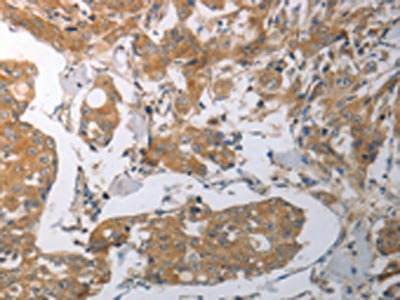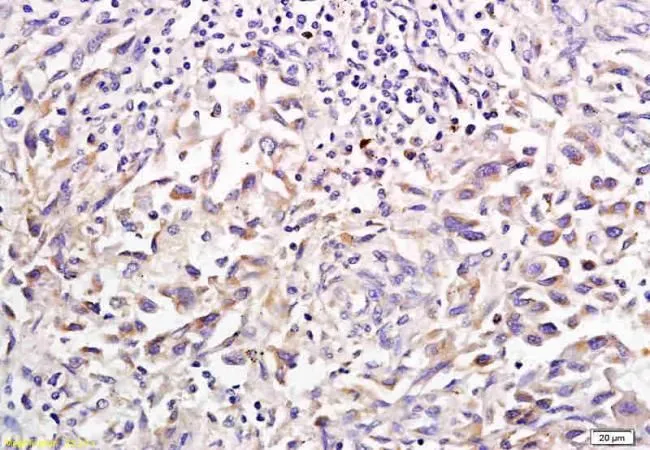![WB analysis of SHH(AA: 26-161)-hIgGFc transfected HEK293 cell lysate using GTX83231 Shh antibody [8G3]. WB analysis of SHH(AA: 26-161)-hIgGFc transfected HEK293 cell lysate using GTX83231 Shh antibody [8G3].](https://www.genetex.com/upload/website/prouct_img/normal/GTX83231/GTX83231_20170912_WB_w_23061322_399.webp)
WB analysis of SHH(AA: 26-161)-hIgGFc transfected HEK293 cell lysate using GTX83231 Shh antibody [8G3].
Shh antibody [8G3]
GTX83231
ApplicationsWestern Blot, ELISA
Product group Antibodies
TargetSHH
Overview
- SupplierGeneTex
- Product NameShh antibody [8G3]
- Delivery Days Customer9
- Application Supplier NoteWB: 1/500 - 1/2000. ELISA: 1/10000. *Optimal dilutions/concentrations should be determined by the researcher.Not tested in other applications.
- ApplicationsWestern Blot, ELISA
- CertificationResearch Use Only
- ClonalityMonoclonal
- Clone ID8G3
- ConjugateUnconjugated
- Gene ID6469
- Target nameSHH
- Target descriptionsonic hedgehog signaling molecule
- Target synonymsHHG1, HLP3, HPE3, MCOPCB5, SMMCI, ShhNC, TPT, TPTPS, sonic hedgehog protein, SHH signaling molecule, shh unprocessed N-terminal signaling and C-terminal autoprocessing domains, sonic hedgehog homolog
- HostMouse
- IsotypeIgG1
- Protein IDQ15465
- Protein NameSonic hedgehog protein
- Scientific DescriptionThis gene encodes a protein that is instrumental in patterning the early embryo. It has been implicated as the key inductive signal in patterning of the ventral neural tube, the anterior-posterior limb axis, and the ventral somites. Of three human proteins showing sequence and functional similarity to the sonic hedgehog protein of Drosophila, this protein is the most similar. The protein is made as a precursor that is autocatalytically cleaved; the N-terminal portion is soluble and contains the signalling activity while the C-terminal portion is involved in precursor processing. More importantly, the C-terminal product covalently attaches a cholesterol moiety to the N-terminal product, restricting the N-terminal product to the cell surface and preventing it from freely diffusing throughout the developing embryo. Defects in this protein or in its signalling pathway are a cause of holoprosencephaly (HPE), a disorder in which the developing forebrain fails to correctly separate into right
- Storage Instruction-20°C or -80°C,2°C to 8°C
- UNSPSC12352203




![ELISA analysis of antigen using GTX60606 Shh antibody [5H4]. Black : Control antigen 100ng Purple : Antigen 10ng Blue : Antigen 50ng Red : Antigen 100ng](https://www.genetex.com/upload/website/prouct_img/normal/GTX60606/GTX60606_20170912_ELISA_w_23061123_608.webp)
![WB analysis of HEK293T cells transfected with Shh plasmid (Right) or empty vector (Left) for 48 hrs using GTX83651 Shh antibody [10H6]. Loading : 5 ug per lane](https://www.genetex.com/upload/website/prouct_img/normal/GTX83651/GTX83651_3791_WB_w_23061420_970.webp)


![WB analysis of human brain tissue lysate using GTX52693 Shh antibody [2G19].](https://www.genetex.com/upload/website/prouct_img/normal/GTX52693/GTX52693_20191119_WB_w_23060900_286.webp)